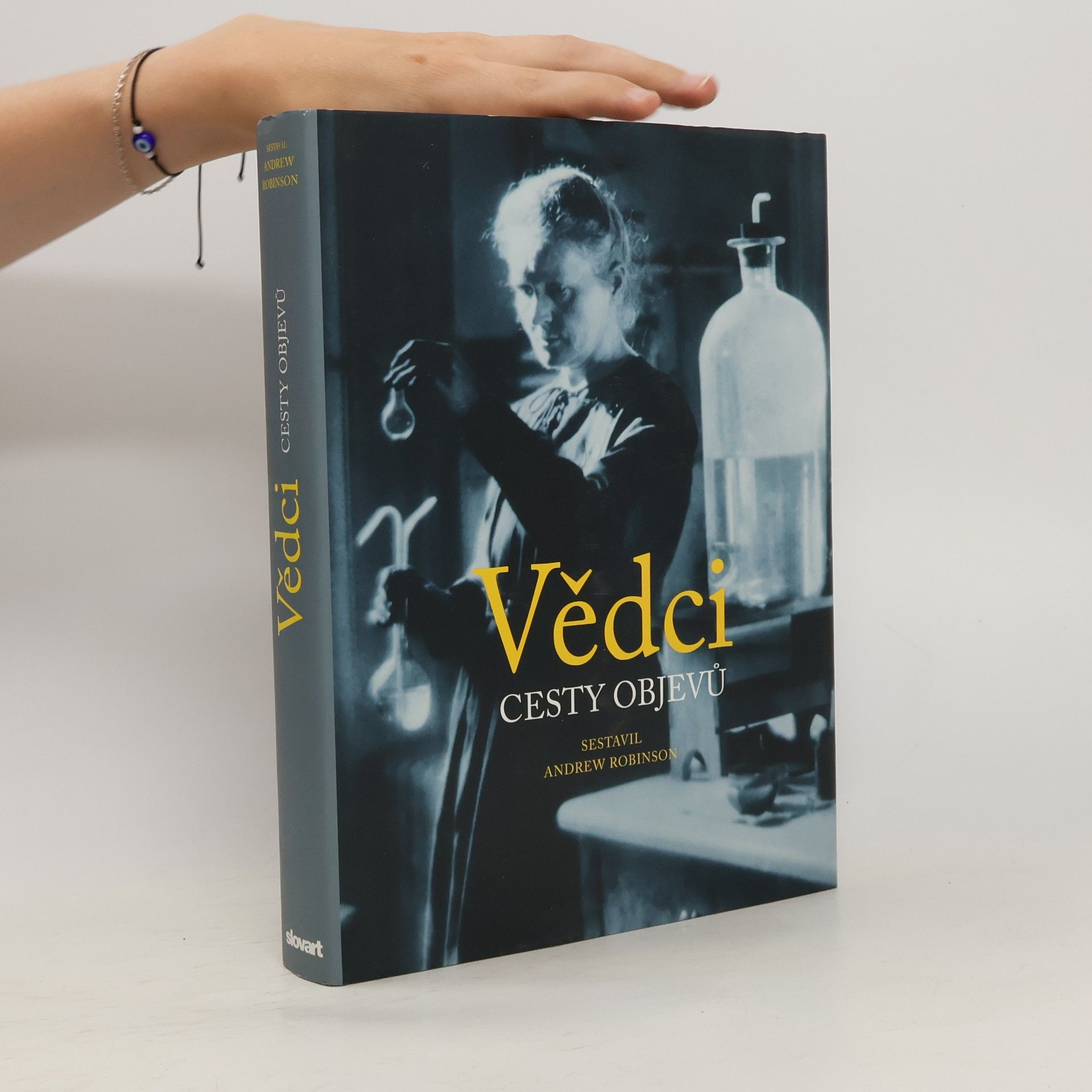Jedovaté nebezpečí. Kniha s prostorovými modely zvířat
- 12 stránok
- 1 hodina čítania
W. Andrew Robinson je britský autor a bývalý novinový redaktor. Jeho hlboký záujem o indickú kultúru, predovšetkým o dielo Rabindranatha Tagoreho a filmového režiséra Satyajita Raya, sa odráža v jeho tvorbe. Ako bývalý literárny redaktor a súčasný spisovateľ sa Robinson venuje skúmaniu kultúrnych a literárnych tém s precíznosťou, ktorá vychádza z jeho akademického a novinárskeho zázemia. Jeho písanie je inšpirované dlhoročnou oddanosťou Indii a jej bohatému kultúrnemu dedičstvu.






KNIHA S PROSTOROVÝMI MODELY ZVÍŘAT. Vydej se na lov s mohutným tygři, hitem karakalem, lstivým levhartem a pumou, která skvěle skáče. Zjisti, kdo dokáže běžet čtyřikrát rychleji než olympijský vítěz, kdo sežere každou noc až 30 kg masa a kdo za jedinou sekundu uloví celé hejno ptáků!
Populárně pojatý výklad dějin měření, měrných jednotek, systémů a měřicích přístrojů. Ilustrovaná publikace o měření vesmíru, planety Země, lidského těla i lidských schopností.
Knihu, kterou připravil mezinárodní tým autorů, sestavil Andrew Robinson. Popisuje život a dílo 43 osobností, jež se proslavily na poli vědy. Pokrývá všechny hlavní vědecké obory, od astronomie po psychologii. Každá z těchto třiačtyřiceti vynikajících osobností vědy zde má svůj portrét, ať už rytinu, malbu, fotografii či sochu. Navíc jsou v knize reprodukce jejich vlastních poznámek, nákresů a diagramů, případně i osobních dopisů, které umožňují blíže nahlédnout do jejich životů a projít cestami, jež je vedly k objevům. Vydání 1.
In 1799, Napoleon's army discovered an ancient stele in the Nile delta, inscribed in Greek, Coptic, and hieroglyphic scripts. This artifact would become crucial for scholars seeking to unlock the secrets of Egyptian hieroglyphs, a language lost for nearly two millennia. Over twenty years later, Jean-Francois Champollion, a remarkably gifted Frenchman, successfully deciphered the hieroglyphs on the stele, known as the Rosetta Stone, revolutionizing our understanding of ancient Egypt. This biography in English of Champollion explores his journey in cracking the hieroglyphic code, beginning with his studies of Egyptian obelisks and papyri, a year sailing the Nile, and examining tombs in the Valley of the Kings—a term he coined. The narrative highlights the rivalry with English scientist Thomas Young, who claimed credit for initiating the decipherment, a claim Champollion vehemently contested. Robinson also delves into Champollion's multifaceted life beyond the Rosetta Stone, portraying him as a teenage professor in Revolutionary France, a supporter of Napoleon, an exile, and a curator at the Louvre. Richly illustrated, this work appeals to those interested in Egypt, decipherment, code-breaking, and the historical context of Napoleon and the French Revolution.
Covers the literary and cultural background to the films, their production, their music composed by Ravi Shankar, their aesthetic value, and their complex critical reception in the East and the West, from 1955 up to the present day.
The enigmatic Garak—Cardassian-in-exile on space station Deep Space Nine—refers to himself as just a simple tailor, but everyone knows that there's more to him than that. Why was he banished from his home planet? And why does he choose exile on Deep Space Nine?
Undeciphered scripts have long tantalized the public, whether it's the possibility of hearing the voices of ancient peoples or the puzzle solver's taste for the challenges posed by breaking codes. Here, Andrew Robinson investigates the most famous examples, beginning with the stories of three great decipherments: Egyptian hieroglyphs, Maya glyphs, and the Minoan Linear B clay tablets. He then covers the important scripts that have yet to be cracked, such as the Etruscan alphabet and Rongorongo from Easter Island.
Tells the remarkable lives of the pioneers of science from Galileo and Newton, Faraday and Darwin, Pasteur and Marie Curie, to Einstein, Freud, Turing, and Crick and Watson. This title features articles that offer an account of the lives and personalities behind the greatest scientific breakthroughs of all time.
Interest in the life and work of the Nobel-Prize-winning writer, Rabindranath Tagore, is now enjoying a revival after many years of neglect outside India. This selection of some 350 letters spanning Tagore's entire life is the first to be available to English readers. The letters are intended to show as many facets of his experience, interests and ideas as possible, and will be a valuable source of information, not only for the understanding of the complexity of Tagore's personality, but also of the times in which he lived.